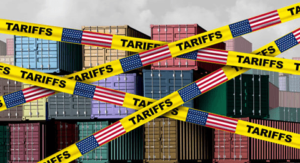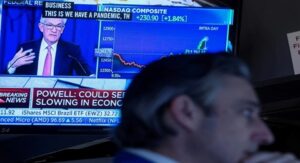
The Future of Chinese Investments in Europe: Political and Economic Challenges
The future of Chinese investments in Europe holds significant potential despite recent declines. Since the turn of the century, China’s “go global” policy has driven substantial investments abroad, particularly in Europe, to acquire advanced technologies and stimulate domestic innovation. Although Chinese FDI in Europe peaked in 2016 and has since decreased due to geopolitical tensions and stricter regulations, a shift towards greenfield investments is emerging.
Prominent Chinese firms are investing in European battery plants, aligning with Europe’s green transition goals. This evolving investment landscape underscores China’s strategic pivot towards high-value sectors, positioning Europe as a crucial partner in Beijing’s global economic rebranding.
Chinese Investments in Europe
Since the beginning of the 21st century, China has pursued a robust strategy to encourage its companies to invest abroad, known as the “go global” policy. This initiative aimed to access new technologies and stimulate domestic innovation, making China more competitive internationally.
Two decades later, the strategy has proven successful, positioning China as a leader in crucial sectors such as green technology and electric vehicles (EVs). However, the trajectory of Chinese investments in Europe faces several political and economic challenges.
Read More: US-China Trade War Threatens Global Economic Stability
This article explores seven key points shaping the future of Chinese investments in Europe.
Table of Contents
1. The Rise of Chinese Investments in Europe
China’s “go global” policy marked the beginning of its economic transformation. By targeting Europe, China capitalized on the continent’s deindustrialization trends and the opportunity to acquire renowned European brands and technologies.
Chinese investments in Europe, including Foreign Direct Investment (FDI), saw remarkable growth, peaking in 2016 with €37.3 billion invested. This period established China as a significant player in various innovative sectors, particularly green technology and EVs.
Read More: Global Political Instability Signals for Rethinking Political Economics
2. The Decline in Chinese FDI
Despite the initial surge, Chinese FDI in Europe has been declining since 2016. By 2022, Chinese FDI had dropped to €7.9 billion, an 83% decline from its peak. This downward trend reflects broader global patterns influenced by the COVID-19 pandemic and escalating geopolitical tensions, such as the war in Ukraine.
These factors have curtailed global cross-border investments, including those from China. Specifically, Chinese investments in Europe have faced increasing scrutiny and regulatory challenges, contributing to the overall decline in FDI from China.
Read More: The Cost of De-Dollarization
3. Geopolitical Tensions and Regulatory Hurdles
Increased geopolitical tensions and a cautious approach from the European Union (EU) and the United States towards China have further complicated the investment landscape. Since 2019, the EU has labeled China a systemic rival, leading to stricter investment screening rules.
In 2022, authorities in the UK, Germany, Italy, and Denmark halted at least 10 out of 16 Chinese investment transactions in the technology and infrastructure sectors due to security concerns. Chinese investments in Europe have faced heightened scrutiny amidst these regulatory changes and security considerations.
Read More: Europe’s Geoeconomic Challenges
4. China’s Domestic Policies
Domestically, China has re-imposed stricter controls on outbound capital flows under Xi Jinping’s leadership. Measures to limit capital and currency outflows have forced Chinese businesses and households to reinvest domestically. Additionally, China’s zero COVID policy hindered cross-border travel and deal-making activities, contributing to the reduction in outbound FDI.
These policies have also impacted Chinese investments in Europe, as companies face more stringent regulations and limited avenues for overseas expansion.
5. Shift Towards Greenfield Investments
While the volume of Chinese investments in Europe has declined, there has been a notable shift towards greenfield investments over mergers and acquisitions (M&A). In 2022, greenfield investments reached €4.5 billion, accounting for 57% of total Chinese FDI in Europe.
This shift is driven by significant projects in the automotive sector, with Chinese battery giants investing in battery plants across Germany, Hungary, the UK, and France. Chinese investments in Europe reflect a strategic focus on establishing new facilities rather than acquiring existing businesses.
Read More: China’s Economic Outlook: Reforms, Challenges, and Global Impact
6. China’s Strategic Focus on the Green Economy
China’s focus on the green economy and EV sector aligns with its goal to upgrade its global value chain position. As the world’s leading producer of EVs, China produced 6.7 million units in 2022, representing 64% of global production. Europe, as the second-largest market for EVs, plays a crucial role in China’s strategy to internationalize its high-skill production.
However, Europe’s limited battery production capacity and high demand for EV batteries make it an attractive market for Chinese investments. Chinese investments in Europe in battery manufacturing facilities and supply chain infrastructure are thus pivotal for meeting both European and global demands for electric vehicles.
Read More: The Irony of American-Chinese Economic Relations
7. Future Prospects and Uncertainties
Despite the challenges, Europe remains a vital destination for Chinese investments in the green sector due to its open market and commitment to the green transition. Chinese investments in Europe have notably increased, driven by opportunities in renewable energy and electric vehicles (EVs). The U.S.
Inflation Reduction Act (IRA), which restricts EV tax credits to batteries free from components produced by entities of concern, including China, has further incentivized Chinese companies to focus on Europe. However, geopolitical uncertainties and potential stricter European investment screenings pose significant risks to future Chinese investments in the region.
Read More: China’s Debt Trap Diplomacy
Bottom Line
The future of Chinese investments in Europe is marked by a complex interplay of economic opportunities and political challenges. While China continues to leverage Europe’s market potential to advance its green economy ambitions, geopolitical tensions and stringent regulatory environments present substantial hurdles.
The evolving aspects requires careful navigation by Chinese investors and European policymakers to balance economic interests with national security concerns. As both regions strive for economic growth and technological advancement, the dynamics of Chinese investments in Europe will remain a critical area of focus in the coming years.





